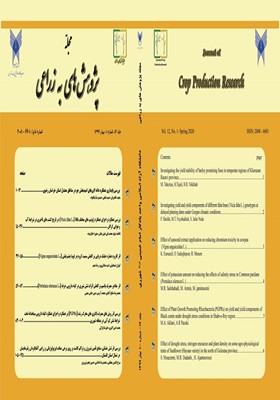-
-
List of Articles
-
Open Access Article
1 - Investigating the yield stability of barley promising lines in temperate regions of Khorasan Razavi province
majid taherian hamid tajala hamidreza nikkhah -
Open Access Article
2 - Investigating yield and yield components of different faba bean (Vicia faba L.) genotypes at delayed planting dates under Gorgan climatic conditions
fateme sheykh mohamad taghi feyz bakhsh safora jafer node -
Open Access Article
3 - Effect of seaweed extract application on reducing chromium toxicity in cowpea (Vigna unguiculata L.)
keyvan esmaeeli omid deghpor reza monem -
Open Access Article
4 - Effect of potassium amount on reducing the effects of salinity stress in Common purslane (Portulaca oleracea L.)
mohamadreza salehabadi mohamad armin matin jamimoeini -
Open Access Article
5 - Effect of Plant Growth Promoting Rhizobacteria (PGPRs) on yield and yield components of Black cumin under drought stress conditions in Shahr-e-Rey region
mohamad amin akbari alireza pazoki -
Open Access Article
6 - Effect of drought stress, nitrogen resources and plant density on some agro-physiological traits of Sunflower (Haysan variety) in the north of Golestan province
serajodin moezi mohamadreza dadasi hosein ajamnorozi
-
The rights to this website are owned by the Raimag Press Management System.
Copyright © 2021-2025







